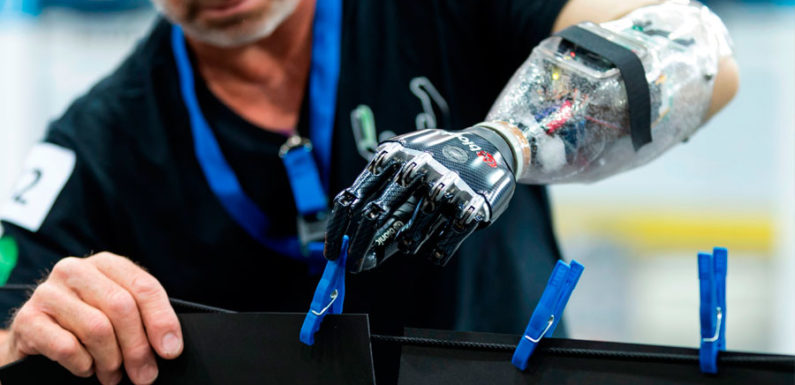
It had been a norm to officially address disability with a promise to offer rehabilitation. Even though some activists detest the word ‘rehabilitation’, and while their intentions must be appreciated, but that doesn’t mean rehabilitation isn’t required. For some deformed individuals, the process can be immensely essential, particularly if it enables them to function on a day-to-day basis, become more self-sufficient and voice their concerns.
In the developed nations, activists working for Independent Living Movement have managed to make their demands for both availability and equal rights, clear. However, these activists normally come from the middle-class sections of the society, so they take a few things for granted. When they talk about availability, ideally they mean things like elevators, ramps and transportation.
But for the differently-abled (also any normal individual) in the under-developed territories or some parts of the developing countries, the primary issues with availability are how to obtain enough food, clean water, proper shelter and basic healthcare. Ramps and wheelchair accessibility are inconsequential for someone who cannot afford to have square meals for the day, let alone a wheelchair.
Such essential requirements are turning out to be extremely difficult to provide for the marginalized and underprivileged population, including the disabled individuals. Under such circumstances, it is crucial to look at marginalization or need for rehabilitation of the disabled as one with the struggles for the empowerment of other underprivileged sections of people.
The obvious disparity in treatment
Keeping in mind the issues, the kind of efforts that would be most fitting are the ones that help these people to be independent. The range of reformation efforts now available in developing territories can be seen in a broad spectrum. Presently these programs can be categorized into two parts, ones that attempt to normalize the disabled and those that liberate them.
Sadly, most of such initiatives are concentrated within institutions. They reach only a meager part of those in need. Many of these institutions are adorned with all the modern, expensive instruments for rehabilitation and therapy. In many of these hospitals and urban centers, you’d come across disabled people are willingly neglected.
The winds of change
In the last decade, however, things have improved considerably. The authorities in the developing countries could finally foresee that the needs of the majority of deformed people can only be achieved by de-institutionalizing such efforts. There has been an increasing amount of effort by national and global agencies, and by some of the more socially active disabled people’s groups to reach out to thousands of deformed individuals whose potentials and needs remain unheard.
The most intriguing and a possibly a path-breaking of these initiatives, commonly referred to as Community-based Rehabilitation (CBR), aims to shift the focus of rehabilitation from the expensive ‘rehabilitation centre’ into less fortunate homes and communities. Even after the World Health Organization’s early endeavours to stringently standardize the cause, the coinage ‘CBR’ encompasses a wide array of programs.
There have been hugely successful CBR programs spearheaded by governments. Even though these initiatives do touch the lives of many people suffering some form of disability or the other, they still emphasize on normalizing the people instead of empowering them. Rehabilitation activities usually consist of a set of pre-packaged, oversimplified survival plans. In practice, however, these endeavours are more ritualistic and useless than the urban rehabilitation centers.
This way, disabled people turn into objects, instead of the subjects, of their rehabilitation. They are trained to live their lives in a certain way when they should be trained to live their life on their terms. You can’t expect the disabled to be independent like that.
Promising turn of events
Having pointed out the glaringly obvious shortcomings, let’s now discuss the positive changes that do take place through these initiatives. This is especially true when a creative leadership is involved that has the guts to go beyond the norms. This seldom happens when disabled people take the reins into their hands and start reconstructing the program on their terms.
At one side of the CBR spectrum, there are focused community initiatives controlled by disabled people or by the loved ones of disabled children. These are often awfully disorganized and yet very engaging. Every initiative is distinctive in its own way. Through these programs, disabled people turn counsellors and talented technicians. Some build orthopedic equipment, low-cost wheelchairs, prosthetics and a huge variety of rehabilitation aids. More often than not the quality of their craftsmanship, particularly the care they take in ensuring the instruments and therapy cater to the needs of every individual, is often as good as, if not better than, that of many highly trained professionals.
In CBR activities, the collaboration of credible professionals for both teaching and back-up is immensely crucial, though a dearth of sufficient professional assistance and referral is one of the most prominent hurdles to successful CBR.
In some of the most excellent CBR activities, the efficient rehabilitation workers are playing a major part in the success of these efforts. These professionals are often humble but non-conformist individuals who are willing to venture out into the society, impart their knowledge and wisdom, and learn from others as equals.
But even more significant to the success of a CBR initiative is the role of the deformed people themselves. If given the opportunity and the platform, these disabled people, even with inadequate formal education, often make excellent rehabilitation activists and community healthcare professionals.

